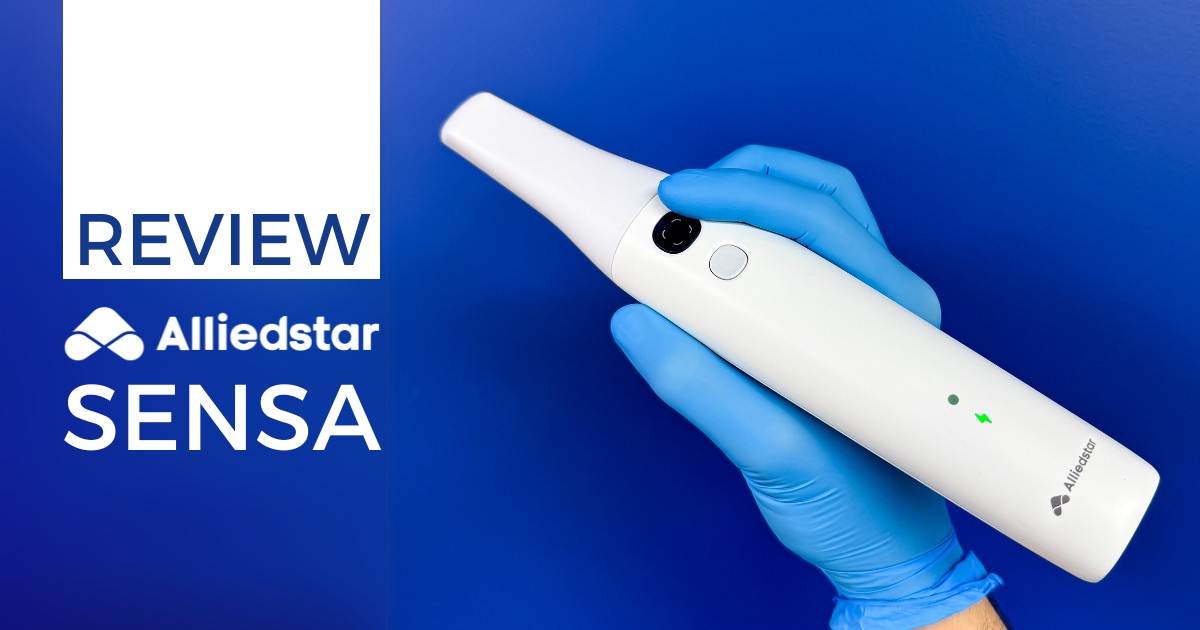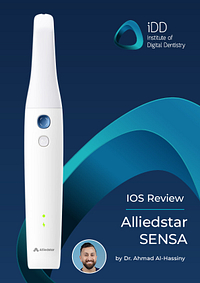The Alliedstar Sensa represents a transformation for the company, marking their most ambitious product launch since Straumann's acquisition in 2023. Having extensively reviewed both the AS260 and AS200E in the past, I was interested to see how Alliedstar would evolve their product line with this flagship scanner.
From the hardware side, the Sensa is not an incremental upgrade - it's a complete reimagining of Alliedstar's approach to intraoral scanning. The Sensa is the successor to the successful AS200E which was won the 1st place in iDD's 2023 “People’s Choice Award” among clinicians. The company has clearly invested significant resources into positioning themselves as a serious competitor in the mid to premium scanner market.
What makes the Sensa particularly intriguing is how it represents Alliedstar's attempt to differentiate themselves from both their budget-focused original scanners and their sibling the Straumann SIRIOS scanner. While the SIRIOS targets practices already invested in the Straumann ecosystem, the Sensa appears to compete directly with established scanners from Medit, 3Shape, and others.

Having tested the Sensa extensively in clinic for the past 4 months, I can share comprehensive insights into its performance, design improvements, and whether this scanner delivers on its promise to elevate Alliedstar from a economic option to a premium contender.
As always, this review remains completely independent. Neither Alliedstar nor Straumann have had any involvement in this evaluation. We do not sell Alliedstar products at our practice, and maintaining objectivity is central to our approach in providing information you can depend on.
Enjoy the review.
Review At a Glance
The Alliedstar Sensa represents a evolution for the company, successfully transitioning from budget-focused hardware to a more premium scanner experience. The complete redesign and improved ergonomics create a compelling package. The software and scanning engine remains similiar from previous Alliedstar models, which still needs a bit more work to be considered 'premium'. In saying that, this scanner can handle every clinical indication I threw at it with ease. Great performance.
Pros:
Cons:
Unboxing Videos
Background
Alliedstar is a Chinese dental technology company that has rapidly emerged as a noteworthy player in the global intraoral scanner market. Founded with a clear focus on digital dentistry, the company aims to provide affordable and user-friendly scanning solutions to dental professionals worldwide. Alliedstar's strategy hinges on democratizing access to advanced scanning technology, particularly for practices and clinics that may have been priced out of the premium IOS market dominated by long-established Western brands.
Early iterations of their scanners (AS 100) were met with cautious optimism due to their budget-friendly build, price point, and concerns around refinement, software, and design maturity limited broader adoption. However, Alliedstar has continued to develop rapidly, incorporating user feedback and emerging trends in scanner ergonomics, software workflow, and cloud integration.
Alliedstar’s growing momentum was validated by its acquisition by Straumann Group. This acquisition not only signals confidence in Alliedstar’s technological capabilities but also provides the company with increased resources, distribution channels, and R&D support. With Straumann’s backing, Alliedstar is now positioned to expand its global reach while maintaining its core value proposition of affordable, high-performance digital dental solutions.
Another major turning point for the company came with the release of the Sensa scanner at IDS 2025, which represents a complete redesign and marks Alliedstar’s move from “budget option” to a more serious contender in the IOS space. As the global demand for digital dentistry continues to grow, Alliedstar is positioning itself as a competitive alternative to higher-end scanners. With a fast-paced development cycle and growing international presence, the company appears poised to play an increasingly influential role in shaping the future of accessible digital dentistry.
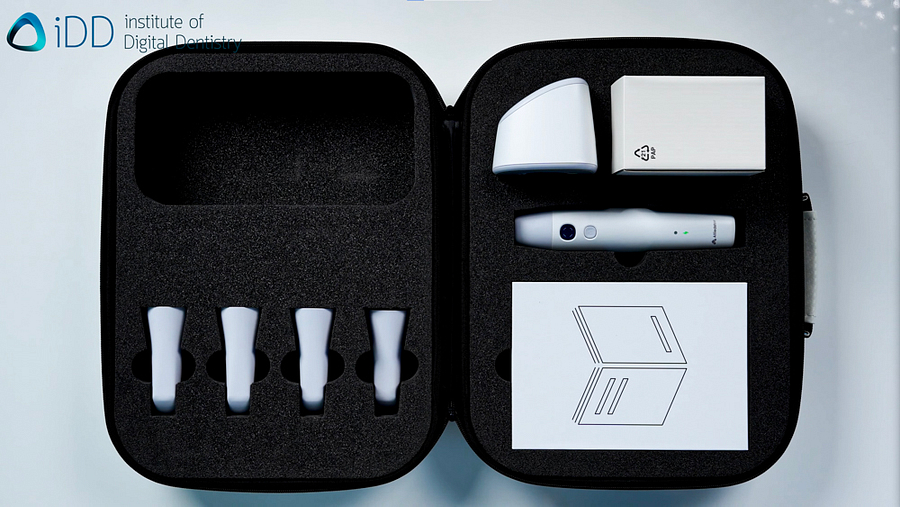
Sensa Scanning Speed
The Sensa maintains the proven scanning capabilities that made previous Alliedstar scanners competitive, delivering full arch scans consistently within 30 seconds. Like other modern intraoral scanners, speed is no longer a significant differentiating factor, and the Sensa performs very well in this category.
While the hardware has been completely redesigned on the outside, the core scanning engine to me feels the same and builds upon the foundation established in the AS200E and AS260. This means existing Alliedstar users will find familiar scanning characteristics - reliable stitching, effective AI artifact removal, and consistent performance across various clinical indications.
To me what really differentiates scanners now is not speed, it is AI functionality and scanning certain challenging indications like atrophic edentulous ridges, bloody areas after surgery, and most recently - all on x solutions.
Overall the Sensa does very well in most of these aspects. The AI functionality continues to do well in the three critical areas that define modern scanning performance:
- Artifact Handling: Effectively ignoring cheeks, tongue, and dental instruments during scanning
- Post-Processing: Accurately removing unwanted elements that may have been captured
- Image Stitching: Seamlessly combining scan segments with minimal errors or stitching problems
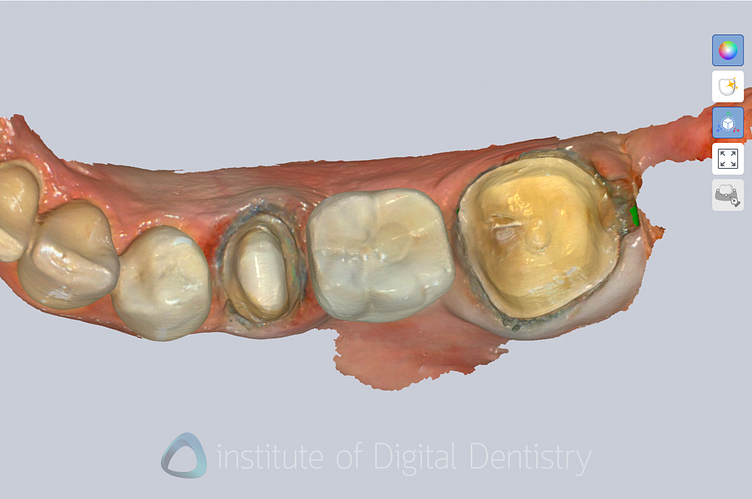
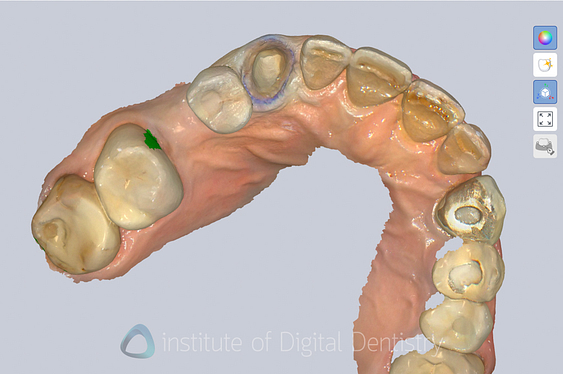
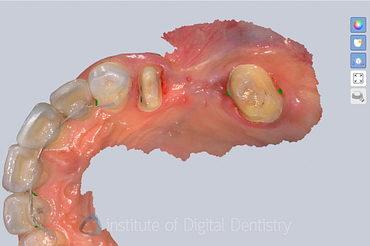

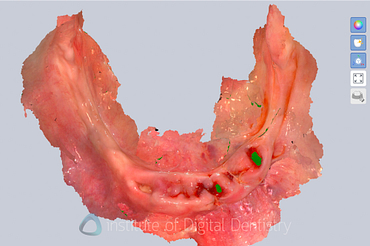
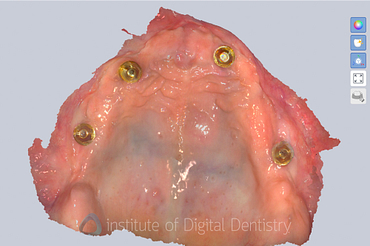
During extensive clinical testing across multiple indications - single crowns, bridges, implant restorations, orthodontic cases, and edentulous scanning - the Sensa demonstrated excellent and reliable performance that I've come to expect from Alliedstar scanners. The scanner handles everything in the mouth well including challenging cases like bloody edentulous areas.
Like its predecessors, the Sensa handles clinical situations effectively. I particularly appreciate its performance with:
- Edentulous Scanning: consistently good at this which often challenges economic-tier scanners.
- Single Implant workflows: good performance with scan bodies of all materials (metal, PEEK etc) + AI detection of impant sites on emergence profile scans
One area that still requires improvement is the final scan resolution. While the scanner retains the cartoon-like aesthetic of previous Alliedstar models during live scanning, the post-processed results have become noticeably more refined and lifelike. However, they still are not the same level of the high-definition output achieved by competitors such as Medit, TRIOS, iTero, and Primescan 1.
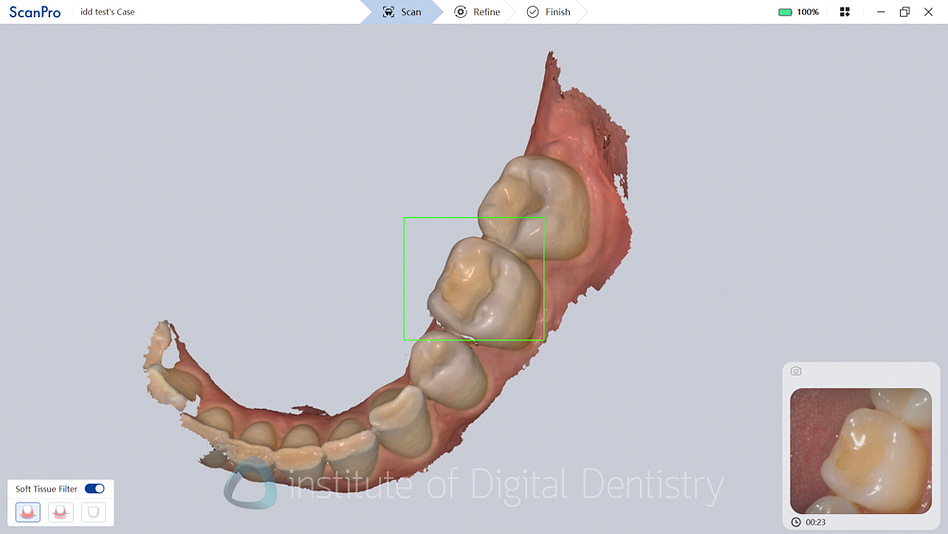
The other interesting thing about the Sensa is the "Texture Mapping" toggle which drastically changes what the textures (colours) for the scan look like. This is by default OFF to enable faster post-processing but in the settings you can turn this on and it results in better looking scan textures. See below.
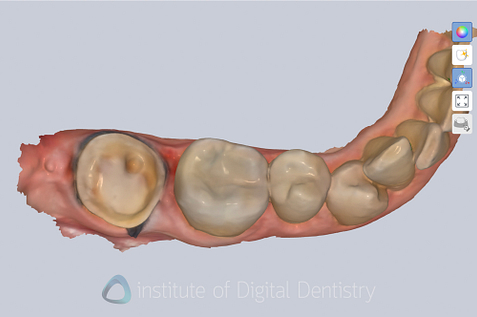
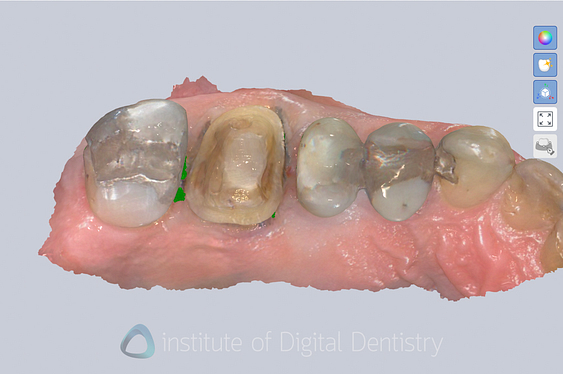
Lastly - comparing it to other scanners. Check out our iDD compares blogs to see side by side comparisons to other leading scanners. In short, the Alliedstar Sensa is an accurate scanner and I would say it comfortably fits in the mid-to-premium tier of the scanner market.
Design and Build Quality of the Sensa
The Sensa represents one of the most dramatic design transformations I've seen from any scanner manufacturer in recent years. Alliedstar has completely abandoned the industrial aesthetic of their previous models in favor of a sleek, modern design that wouldn't look out of place alongside many premium competitors.
The Sensa is a wireless scanner that weighs 230 grams. This makes it lighter than than the previous generation AS200E (245g), and most other wireless scanners on the market. For comparison, the Medit i700 Wireless weighs 328g, TRIOS 5 is 299g. The only lighter scanner that comes to mind is the wireless Elite by Shining 3D at 194g. One thing to note about the Sensa is that it is one of the longest scanners from scanner tip to the base of the scanner. But the weight is balanced nicely and it never feels 'back heavy' when holding it.
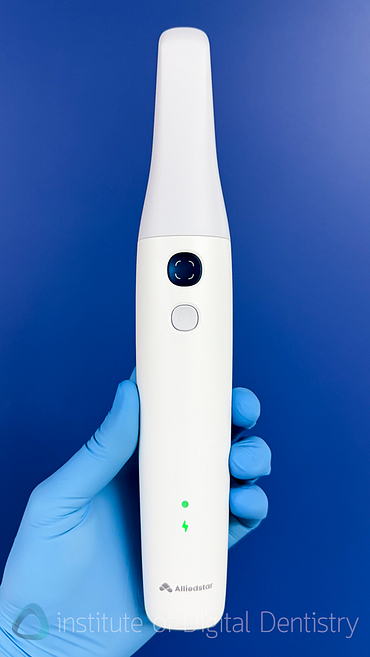
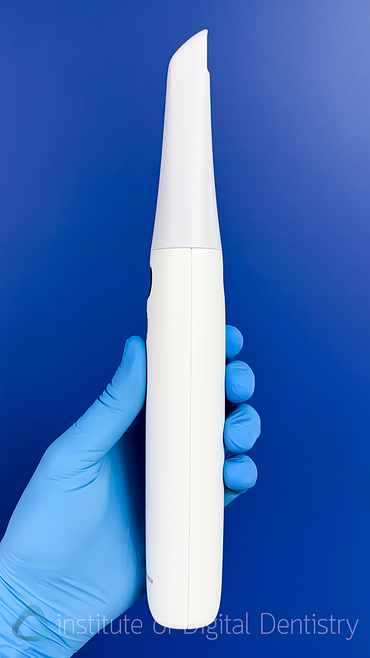
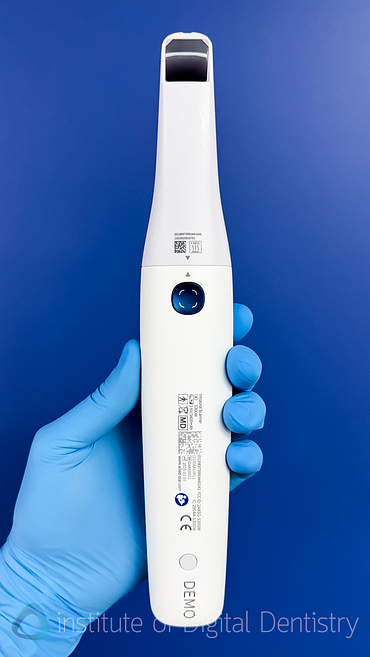
The build quality represents a leap from previous Alliedstar models. Where the AS100 felt like a prototype and the AS260 showed improvement but still felt budget-oriented, the Sensa presents much more premium construction quality. The fit and finish is excellent, and the overall design language communicates quality. I would say it is not quite the level of Primescan, iTero Lumina or TRIOS 5/6 but definietly on the same level as Medit.

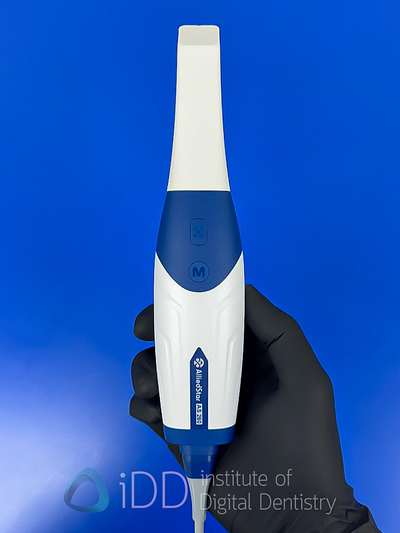

Alliedstar has maintained their signature dual-button design - perhaps the most underrated ergonomic feature in the scanner market. I actually really like having scan button on both the top and bottom of the scanner body. It means I can always reach a button regardless of my grip, allowing for comfortable operation with either a thumb or index finger. The scanner's shape and balance feel natural in hand, with the wireless design eliminating the cable drag that can impede smooth scanning movements.
One interesting claim from Alliedstar is that the Sensa can withstand drops from desk height without damage or requiring recalibration. While I didn't intentionally test this feature, the construction suggests this may not just be a marketing hyperbole. The scanner feels solid and well-engineered, and Alliedstar feel so confident in this that they are including drop coverage into the 3 year warranty.
The Sensa utilizes the same TP-Link wireless technology as previous Alliedstar models and many other wireless scanners on the market, connecting to your laptop via a USB 3.0 dongle. The system offers a claimed range of up to 10 meters. During extensive testing, I found the wireless connection stable with no noticeable lag or dropouts, even when moving to the furthest corners of my large treatment rooms. To be fair, basically all wireless scanners these days have very solid connection and you should not fear any disconnection or lag during use.
Then comes charging the Sensa which has also been rethought. The previous Alliedstar wireless induction charging base - a two-piece system consisting of a metallic base and scanner dock, is gone. Now we have a much smaller base that the Sensa fits in and charges via a standard gold connector.

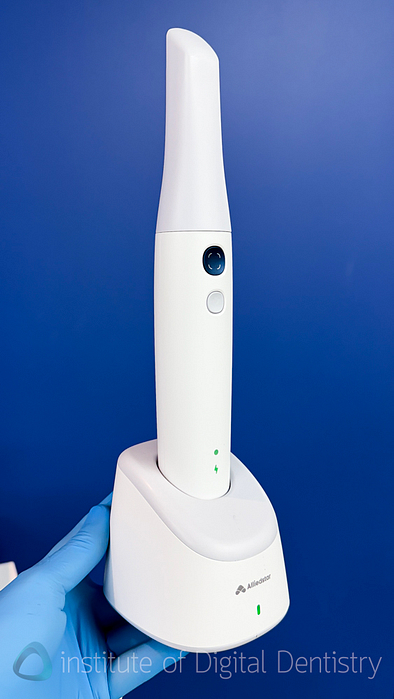

The charging base now connects to the wall rather than your laptop via USB for power. But this connection is only necessary for charging - the scanner operates completely independently during use. LED indicators on both the base and scanner provide clear visual confirmation of charging status. Not simply connecting to your laptop could be seen as a downside as now you will need to make sure your Sensa base is in range of a power socket - but why this was done was for fast charging. More on that below.
One of the most significant changes in the Sensa is the move to a fully integrated, non-removable battery. there is also no back-up cords or dummy batteries. This represents a complete a big change from previous Alliedstar models which had removable batteries.
The previous batteries meant users had to insert and remove standard universal batteries that frankly felt cheap and industrial. The new integrated battery means the Sesnsa battery is permanently built into the scanner, creating a cleaner, more premium feel that matches the overall design philosophy.
Advantages of the integrated battery:
- Premium Feel: No more cheap-feeling removable components
- Streamlined Design: Cleaner aesthetics without battery compartments
- Simplicity: Just place in dock to charge - no battery management
However there is a tradeoff concern - the obvious question is what happens when the battery eventually degrades or fails? Unlike previous models where you could simply swap in a new battery, the integrated system means the entire scanner would theoretically need service or replacement. This could be a massive issue. The saving grace is that the company offers a 3 year warranty which includes the battery. They say according to their testing, the battery retains 85% of capacity after 1,500 charging cycles.
The other thing is what happens if the battery dies? Without spare batteries always charged and ready, what do you do? Well Alliedstar addressed this with fast charging technology. The company says with just three minutes of charging you will be able to scan for 7 minutes and on a full charge you have over three hours of continuous scanning.
Sensa Scanner Tips
The Sensa introduces a redesigned scanner tip that are a bit better than previous Alliedstar generations. The company has moved away from their more industrial-looking previous tips to create components that better match the scanner's more premium aesthetic.
The new tips feature a rounded design that looks and feels more refined. The construction quality is noticeably improved. These tips finally look like they belong on a premium scanner rather than appearing as an afterthought.
Interestingly, Alliedstar has eliminated the small/pediatric tip option, instead focusing on a single universal design that the company claims works effectively for all patients. This universal scanning tip has a size of 22 x 17 mm, and a scan area (field of view) of 16 x 14 mm, similar to the large tips from previous models. I for one am happy with this change as I have found myself rarely, if ever, opting for smaller tips compared to regular ones when using scanners from any IOS company. The scanner also has a depth of field of 18mm - this is improved over previous generation Alliedstar scanners.
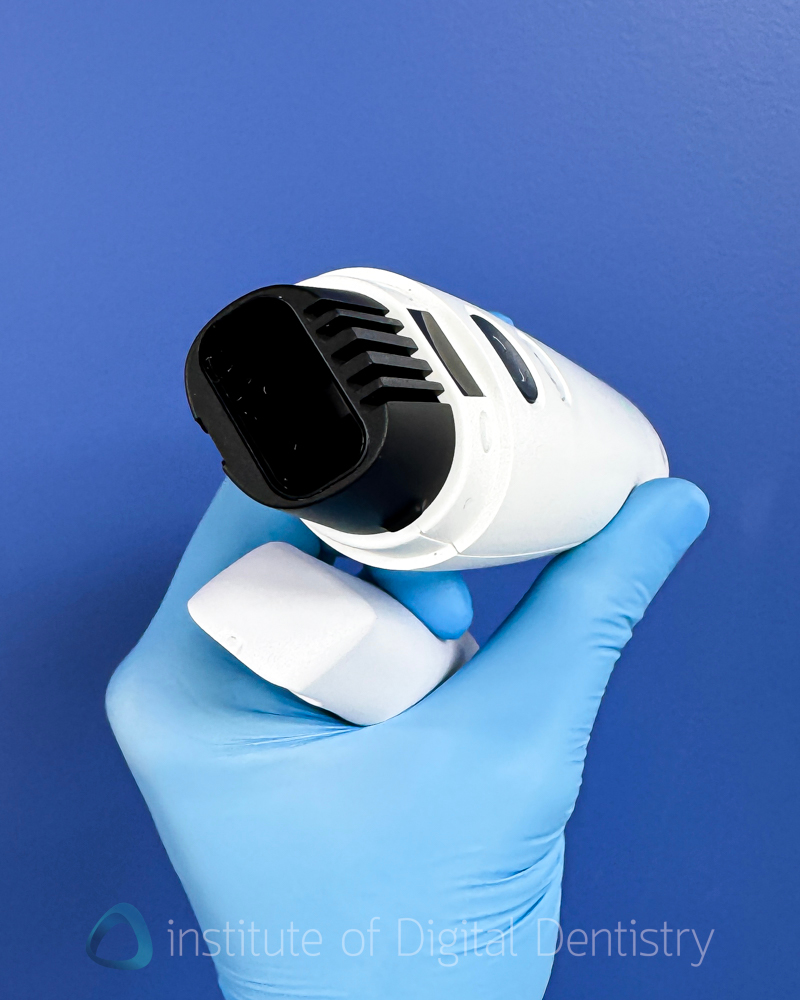
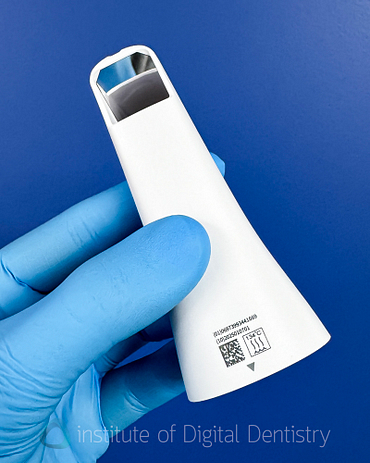
The new tips can be autoclaved up to 180 times at 134°C for 4 minutes. However, the cost has increased significantly - scanning tips are now $120 USD for a pack of 2 ($60 each), compared to $45 for previous generation tips. Based on the 180 autoclave lifespan, this translates to approximately $0.33 per scan, which remains reasonable compared to competitors, though the upfront cost per tip is notably higher. You get four scanning tips in the box.
Like previous Alliedstar scanners, the Sensa heats its tips quickly - typically within 5 seconds. There is virtually no pre-heating time - as soon as your turn it on, it is ready to scan with no fogging of the scanner tip. I am not sure how they are doing this but it works very well.
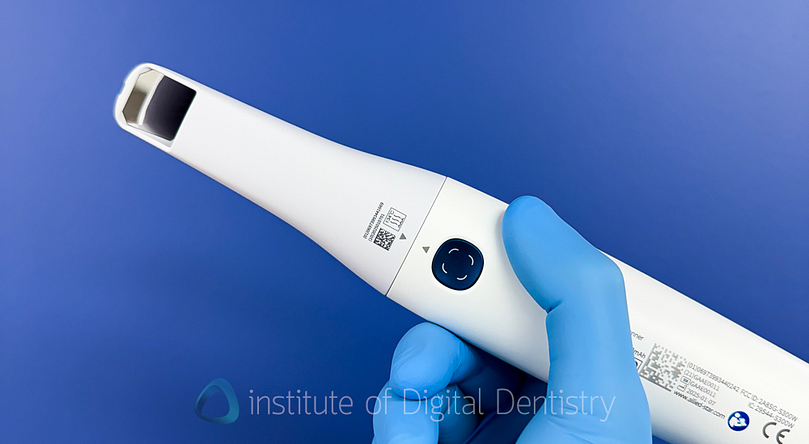
Sensa Software and Ecosystem
The software experience with the Sensa shows continued evolution by Alliedstar, though the improvements are more incremental than revolutionary compared to the dramatic hardware transformation.
The software represents progress from 2 years ago - back when Alliedstar first came out with the AS100, it lacked even patient management. Nowadays the scanner software is much better, simple to use and generally intuitive.
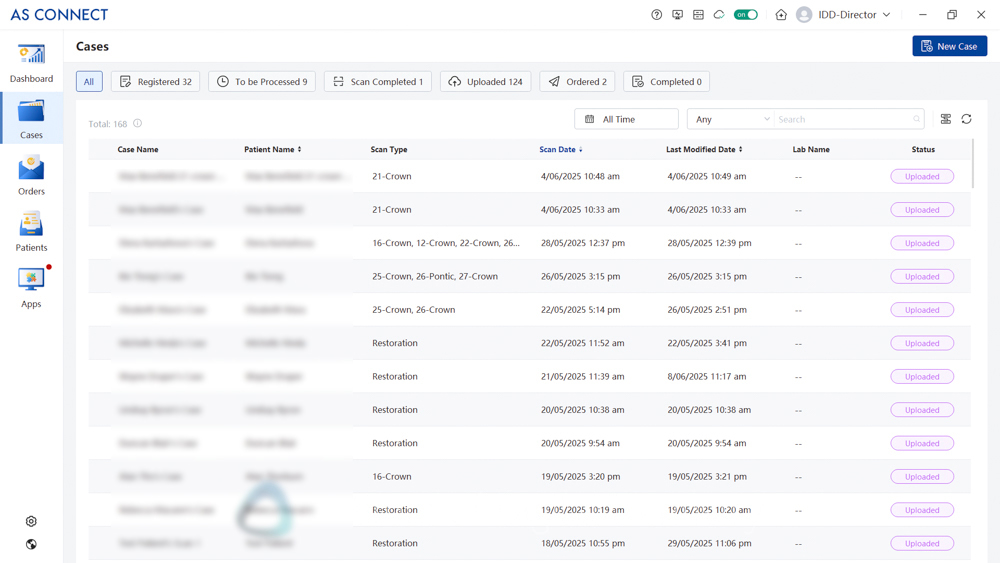
The Sensa works on the AS Connect ecosystem, which remains a two-application approach - patient management in AS Connect and actual scanning in a separate ScanPro software window. While both applications have been refined and feel more professional than previous iterations, this separation prevents the seamless, integrated experience found in competitors like TRIOS. Although AS connect has been improved a lot, ScanPro still looks a tad dated, yet works well.
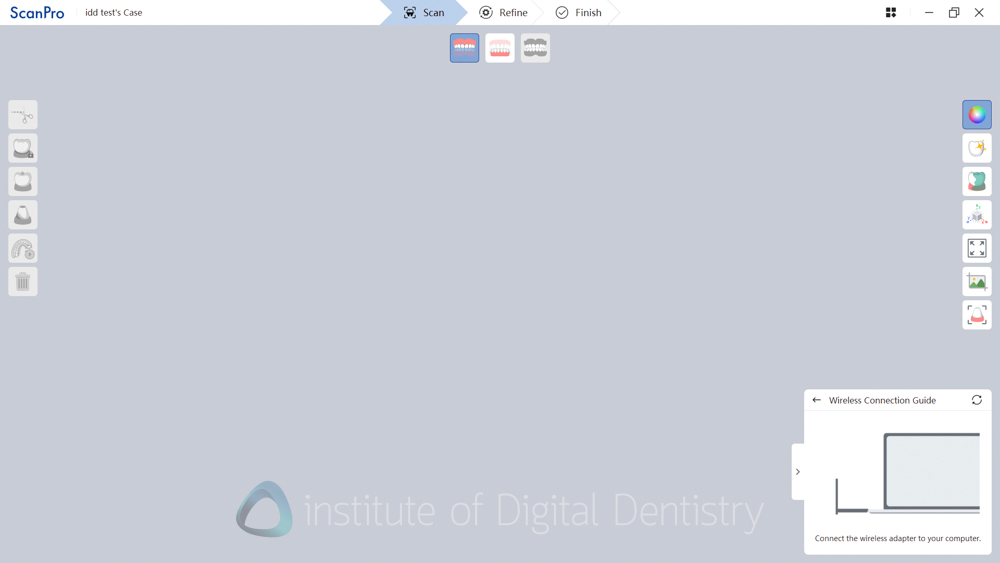
The AS Connect interface maintains its Medit (inspired?) design language, which continues to be a positive aspect given Medit's reputation for intuitive software. The left sidebar provides clear access to cases, patients, and scans, while the patient management tools feel more mature than in previous versions. Case creation is straightforward, and the lab prescription system adequately covers most common indications and workflows.
There is also an entire AS Cloud platform that you get for free. All scans are sent to the cloud automatically for storage. This cloud storage is becoming a market norm but it is nice to see it as a feature here too. The cloud storage is free.

The Sensa includes a decent suite of applications
- AI Oral Health Report: AI generated diagnostics which works OK-ish.
- Model Builder: standard model builder which is a must have in this market.
- Orthodontic Simulator: improved simulation capabilities but still mid tier.
- Mesh Compare: comparative analysis tool for monitoring changes over time.
- Smile Design: basic smile design functionality that remains adequate but not exceptional
- Additional Partner Integrations: continued connections to printing platforms and CAD systems
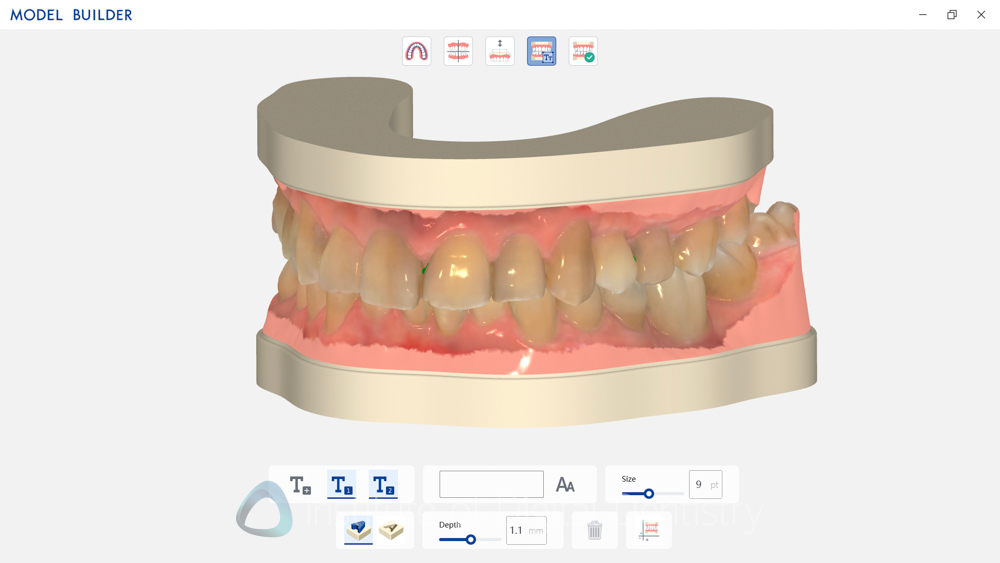
While this represents a more comprehensive application suite than what was available during the AS100 era - when Alliedstar's software was very basic - it still doesn't approach the sophistication and depth of features found in Shining 3D's, TRIOS or Medit's ecosystem.
The Sensa's software experience can best be described as "competent and improving" rather than "market leading." For practices primarily focused on scan-and-send workflows, the software provides more than adequate functionality with a intuitive interface. The applications cover basic digital workflow needs without overwhelming complexity.
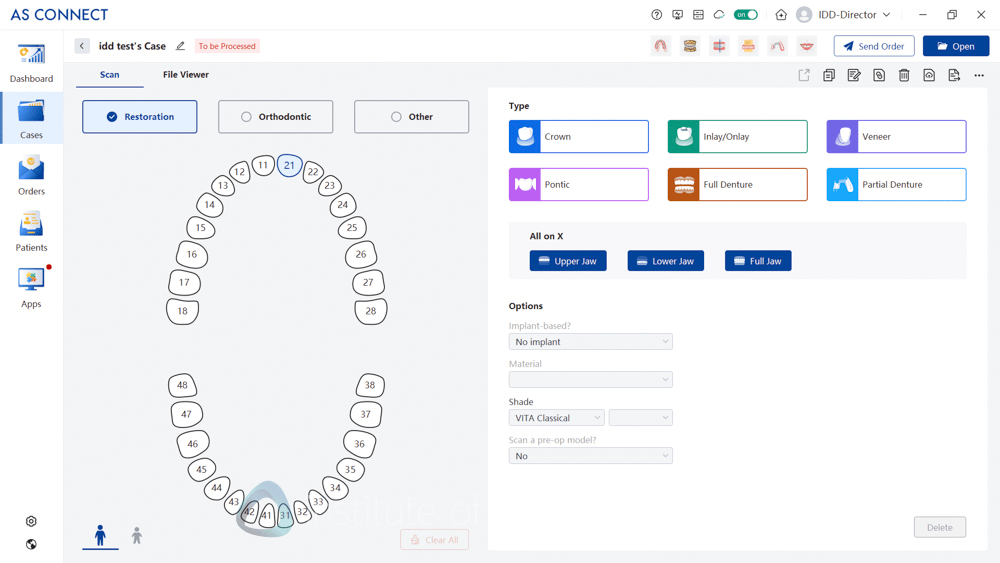
There are two things missing as of writing this review that I would like Alliedstar to add to their software workflows:
- Denture workflows - what I mean by this is when selecting full denture, good scanner software these days should give you multiple windows for scanning. For example, upper and lower edentulous, bite and scanning dentures / wax rims. Ideally the software should also automatically align your edentulous scan with your denture scan. Right now this doesnt exist on the ScanPro software only giving you upper, lower and bite.
- Full arch implant workflows - made popular by Shining 3D Elite and then followed by TRIOS with their integration of TruAbutment. To make Sensa a truly competitive player with the premium scanners I would like to see a full arch implant workflow.
Lastly, just like every scanner these days - the Sensa is a totally open scanner with all export options including STL, PLY, and OBJ. Does this need to be mentioned anymore? All scanners are open in this market and allow STL and at least PLY (colour) export.
Note: like almost every other scanner on the market except iTero, Omnicam and TRIOS 3, Alliedstar cannot be used with Invisalign. It can be used with any other aligner company.
How Much Does the Sensa cost?
The Alliedstar Sensa costs $13,995 USD.
This positions it in the mid-to-premium tier of the scanner market. Additional things to consider:
- Scanner Tips: $120 USD for a pack of 2 tips ($60 each)
- Cost per scan: Approximately $0.33 based on 180 autoclave cycles per tip
- No ongoing fees: No subscription or cloud storage charges currently
- Three year drop coverage and warranty
The Sensa's pricing creates interesting dynamics in the IOS market:
- Less expensive than premium competitors like Medit i900, TRIOS 5 / 6, Primescan or iTero Lumina.
- More expensive than economic options (Runyes, Fussen, Panda etc) but with better build quality, arguably better software and clinical performance.
- Comparable to mid-tier offerings from established brands (e.g i600) but with an advantage of being very good at edentulous scanning.
With the Sensa's launch, Alliedstar has also repositioned their entire product line with some price cuts to previous models:
- Sensa: $13,995 USD (flagship/premium)
- AS200E: $11,995 USD (mid-tier wireless)
- AS260: $8,995 USD (entry-level)
- AS100: discontinued.
This tiered approach allows practices to choose the appropriate level investment while maintaining access to Alliedstar scanning technology which is actually quite good for all clinical indications I tested.
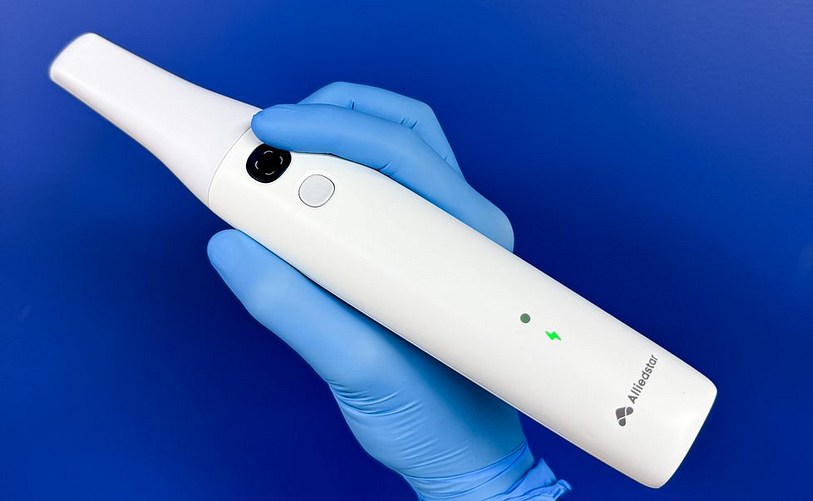
Conclusion
The Alliedstar Sensa represents a fascinating transformation that positions the company as a legitimate competitor in the mid to premium scanner market. By completely redesigning the external hardware, improving the software experience, and maintaining competitive pricing, Alliedstar has created a scanner that may challenge established scanners on multiple fronts.
The complete hardware redesign creates a scanner that looks, feels, and (mostly) performs like a premium device, with ergonomic improvements and build quality representing a huge leap from previous Alliedstar models. At $13,995, the Sensa delivers excellent scanning at a price point. With the prices of scanners constantly dropping, and now two and three thousand USD scanners being a norm in the market, this scanner is clearly going after the more premium end of spectrum.
The Sensa does a lot of things well, however, areas for continued development remain apparent. While substantially improved, the software still doesn't match the sophistication found in some premium scanners, with the separate scanning window approach feeling less seamless than fully integrated solutions. The scan resolution and detail, while adequate for most applications, doesn't quite reach the highest levels achieved by premium competitors.
The Sensa's introduction creates interesting competitive dynamics in the scanner market, directly challenging mid-tier offerings from established brands while providing an accessible path to premium features (like excellent edentulous scanning) for budget-conscious practices. For practices considering the Sensa, the decision often comes down to specific workflow requirements and budget considerations, as the scanner excels as a reliable, well-designed impression replacement tool with excellent ergonomics and competitive pricing.
Practices seeking a mid-to-premium scanner without premium pricing, and those wanting reliable scanning without a huge price tag will find the Sensa particularly appealing. Budget-conscious buyers seeking premium features and existing Alliedstar users looking to upgrade to better hardware should definitely try this scanner.
Conversely, practices requiring the highest possible scan resolution, users needing extensive software applications and workflows, orthodontic practices requiring Invisalign compatibility, or those preferring wired backup options might find better solutions elsewhere.
The Sensa proves that Alliedstar has evolved from a budget-focused manufacturer to a legitimate premium competitor. With Straumann's backing and continued development, the company appears well-positioned to capture additional market share in the increasingly competitive scanner landscape. I would not be surprised if Alliedstar becomes one of the top 5 scanner companies within a few years. Thanks for reading.
Review Overview
Evaluation Ratings
Scanning Speed
Scanning Flow
Scanner Size
Ease of Use
Scanner Software
Investment Cost
Additional Features
Wireless Scanner
Wireless scanner - TP Link Dongle
Caries Detection
No caries detection
Software Apps
Multiple apps
CAD/CAM Software
None
Subscription Requirements
None
Autoclavable Tips
180 or 60 times per tip

